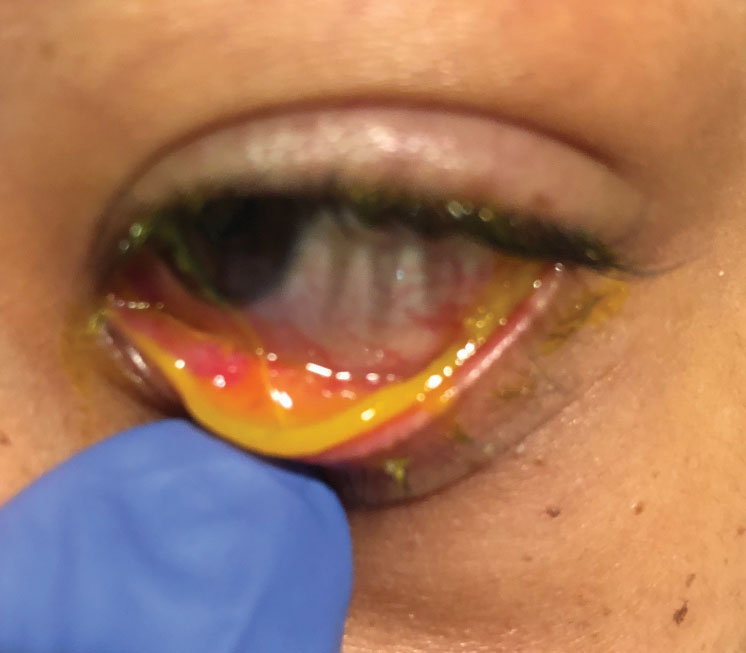 |
| Studies infantile ocular diseases relying only on ICD-9 codes may result in overestimation. Photo: Fiza Shuja, OD. Click image to enlarge. |
Research studies often rely on claims data to cull together a large participant pool as the basis of their findings. A recent investigation from the Mayo Clinic cautions that ICD-9 codes used for infantile eye diagnoses may vary widely, which emphasizes the limitations of database research methods that solely rely on claims data to identify pediatric eye diseases.
The study included approximately 5,100 infants who were identified by a diagnostic code search for “all ocular conditions.” Specifically, the overall positive predictive values of ICD-9 codes for infantile ocular diseases varied from 8% on the low end to 88% on the high end.
Additionally, ICD-9 accuracy for more common conditions such as conjunctivitis and congenital nasolacrimal duct obstruction didn’t necessarily trend toward greater predictive values compared with codes for less frequent diagnoses such as esotropia and exotropia, the study authors noted.
When comparing claims data from eye specialists vs. non-eye specialists, eye specialists more accurately billed for pseudo-strabismus and physiologic anisocoria, while non-eye specialists tended to bill more accurately for conjunctivitis.
The study participants were from Olmsted County, Minnesota, were one year old or younger and had at least one ocular disorder that occurred between 2005 and 2014. To assess ICD-9 code accuracy, the medical records of all diagnoses with 20 or more cases were individually reviewed and compared with their corresponding ICD-9 codes. A total of 10 ocular diagnoses were included in the analysis.
Study highlights included:
The most frequent diagnoses were conjunctivitis (1,695) and congenital nasolacrimal duct obstruction (1,250), while the least common was physiologic anisocoria (23).
Negative predictive values ranged from roughly 96% to 100%, while sensitivity measurements varied from about 3% to 99%. Specificity findings ranged from about 73% to 100%.
ICD-9 codes were most accurate in identifying physiologic anisocoria (88%) and least accurate in identifying preseptal cellulitis (8%).
Comparing eye specialist vs. non-eye specialist findings, the authors noted a significant difference in ICD-9 code positive diagnoses for conjunctivitis (roughly 27% vs. 64%), pseudo-strabismus (86% vs. 25%) and physiologic anisocoria (96% vs. 33%).
Given the ICD-9’s expansive nature of over 12,000 diagnostic and 3,500 procedural codes, factors that contribute to imprecise claims data coding and variable accuracy rates include unintentional and intentional coding errors (upcoding, misspecification, incorrect unbundling of codes, etc.), a lack of institutional quality control efforts and variations in coder training and experience, the investigators explained. Additionally, many ICD-9 codes have broad descriptions and are used for a wide range of diagnoses, thereby rendering many of them non-specific, they added.
Inaccurate coding may also represent the omission of billing codes by busy providers, the researchers suggested.
“These findings suggest that the use of claims data alone for identifying pediatric eye diseases has limited predictive value and may overestimate the true number of diagnoses within a cohort,” the authors wrote in their paper. “Alternative methodologies such as incorporation of complementary search criteria and free-text from the medical record into coding algorithms should be considered to more accurately identify pediatric eye diagnoses in ophthalmology database research.”
Xu TT, Bothun CE, Hendricks TM, et al. Accuracy of the international classification of diseases, 9th revision for identifying infantile eye disease. Ophthalmic Epidemiol. November 25, 2021. [Epub ahead of print]. |

